We welcome you to our extensive study concerning HDPE double-wall corrugated pipe, a crucial element in engineering and construction undertakings. The essay seeks to provide readers with comprehensive knowledge of HDPE (High-Density Polyethylene) double-wall corrugated Pipe, its benefits, applications, and how it should be installed. If you are an expert in the field or just started and want to discover how this latest pipeline innovation adds value to infrastructure while improving its longevity, stay tuned for our critical tips about HDPE double wall corrugated piping. This will enable us to examine key features and considerations regarding HDPE double-wall corrugated pipes, thus arming you with the information to guide you in making well-informed choices for your next project.
What is an HDPE double-wall corrugated Pipe?
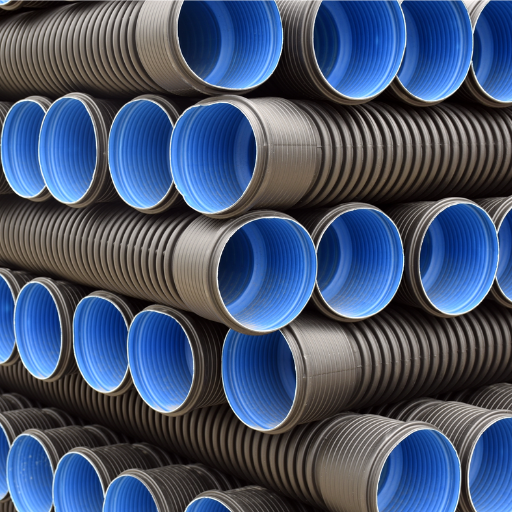
Image source: https://www.erapipefittings.com/
HDPE Double Wall Corrugated Pipe is a flexible, high-performance pipe made from High-Density Polyethylene (HDPE); it possesses a dual-wall structure. While the outer part boasts of being wavy, toughened, and long-lasting, the inner side is smooth, enabling efficient fluid movement and lowering frictional effects. Because they can handle external forces applied to them, such as weather conditions, among others, HDPE double wall corrugated pipes are used in places such as sewerage systems, drainage systems, and stormwater management systems. Moreover, their lightweight further makes transportation more accessible and installation faster, making it a choice among many engineers across different projects.
Understanding the Material: High-Density Polyethylene
High-density polyethylene (HDPE) is a thermoplastic polymer known for its strength and density, thus making it one of the most used materials in manufacturing different products like pipes. It is rugged and long-lasting due to its high resistance to impact and chemicals, which gives it flexibility under diverse environmental conditions. This material can survive prolonged exposure to sunlight without breaking down because it is UV-resistant. Moreover, HDPE has low water absorption rates; therefore, it does not wick moisture and remains structurally sound even in water management applications. Besides, HDPE’s recyclability adds value by promoting sustainable construction practices and reducing the environmental footprint during engineering.
Advantages of Double Wall Corrugated Design
One advantage of double-wall corrugated HDPE pipes is that they perform very well and are efficient compared to other kinds of pipes. The first reason this design improves performance more than others is by adding weight, which allows them easy installation or handling. The second reason this design increases efficiency compared to others is that it minimizes turbulence and friction in fluid flow, hence enhancing hydraulic efficiency. Also, these pipes have superior crushing strength and more excellent external load resistance since they have corrugated exteriors thus suitable for deep burial and varying soil conditions purposes. Moreover, double walls provide more elasticity, allowing the pipelines to absorb vibrations alongside ground movements, especially for regions prone to earthquakes, so buildings do not collapse immediately after earthquake shocks occur. Finally, this new style also contributes towards lifespan extension, thus proving cost-effective by minimizing constant replacements and repairs on long-term civil engineering projects.
Common Uses and Applications
Due to its resilient and flexible nature, HDPE pipes are used in various applications. They are most commonly found in water supply systems, which are reliable means of conveying clean water from one place to another. Additionally, they are utilized widely for drainage systems such as wastewater treatment and stormwater management due to their exceptional anti-corrosion and chemical resistance properties. Also, these pipes have a significant role in gas distribution networks, which ensure natural gas’s safe and efficient transportation. Moreover, their lightness makes them suitable for telecommunications conduits, mining operations, and agricultural irrigation systems.
How to Select the Right Corrugated Pipe?
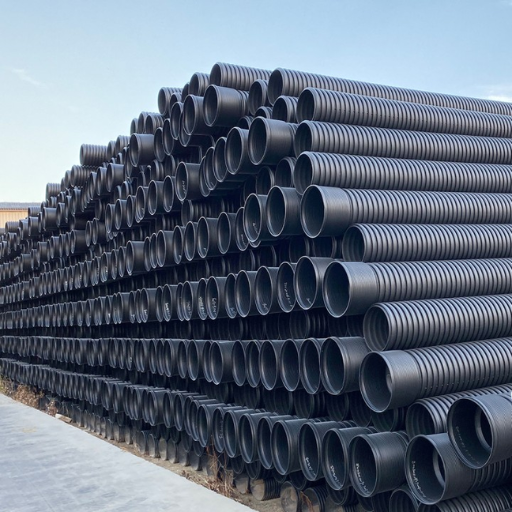
Several factors need to be considered when selecting the appropriate corrugated pipe. To begin with, it is necessary to identify the specific application or environment within which it shall be deployed since soil conditions, fluid type, or pressure requirements might influence its choice significantly. This is followed by consideration of the material composing the pipe; even though HDPE is famous for being durable and corrosion resistant, there might be other suitable materials depending on the application under concern. Similarly, evaluate the diameter of the pipe and the thickness of its walls, making sure that it meets flow requirements besides having the structural integrity needed in your project. Finally, confirm qualification status and conformity with industry standards to obtain high-quality products that will serve you better during intended use.
Evaluating Pipe Specifications
Crucial Factors to Consider while Evaluating Pipe Specifications Derived.
- Material Properties: In this regard, however, understanding the inherent qualities of the pipe material, such as strength, ductility, and resistance to environmental factors, is very important. For instance, HDPE pipes are known for their flexibility and impact resistance, which makes them applicable in various ways.
- Pressure Rating: This determines whether the pipe can resist internal or external pressures. For example, water supply and gas distribution systems must not fail.
- Dimensions and Tolerances: The length, diameter, and wall thickness specifications of a pipe should conform to the project’s requirements. The right tolerances ensure compatibility with fittings and other system components, thereby speeding up the installation process.
- Standard Compliance: Compliance checks should be done on these pipes to assure quality and reliability in long-term performance because they meet ASTM, ISO, or AWWA standards, among others used in the industry.
Considering these factors will enable one to make an informed choice when picking out an appropriate pipe for a given application.
Importance of ASTM Certification
ASTM certification for pipes is essential as it shows that the materials have undergone thorough testing and meet a defined quality and safety standard. For one, ASTM standards ensure pipes are made through uniform processes, enhancing their reliability in diverse uses. Second, adhering to ASTM certification can help prevent expensive failures and legal suits by ensuring that an established authority has reviewed a particular product. Lastly, various industries or municipalities require using ASTM-certified materials to ensure adherence to specific laws, promoting long-lasting structures and infrastructure integrity. Given this reason, investing in ASTM-compliant pipes is imperative for the longevity of service life and high operational efficiency.
Choosing Between Soil Tight and Watertight Options
When selecting between soil-tight or watertight pipe options, the application’s specific needs must be considered. Soil-tight tubes (commonly known as “drainage pipes”) are intended to keep out soil infiltration, making them suitable for groundwater shedding while allowing some water drainage. These are commonly used in drainage applications where keeping soil out of the pipe is essential. Conversely, water-tight tubes are designed to stop leakage; thus, they are suitable for fluid containment applications such as sewer systems or underground water utilities.
Other factors influencing the final decision include local regulations, transport material types, and environmental conditions. Other considerations, such as talking with industrialists while examining site-specific requirements, can also help in choosing between options available so that they can last longer or perform better than expected – increased durability and performance efficiency also come into play when we discuss this topic.
What Are the Installation Guidelines?
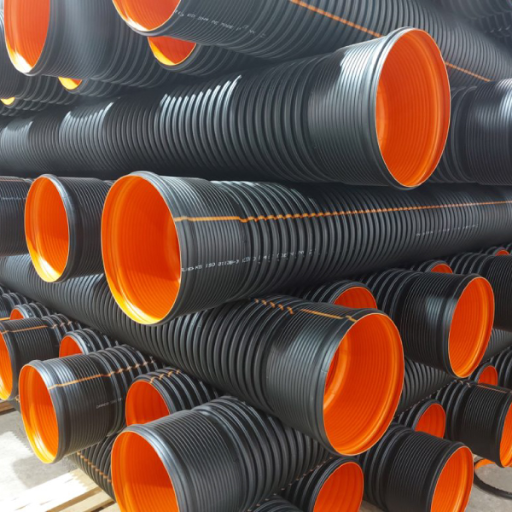
During pipework installation, specific rules must be followed for the best performance and long life of the system. Firstly, it is advisable to look at the manufacturer’s recommendations regarding installing the materials to understand the specifics of each. Before starting any installation, an appropriate site survey should be carried out to assess soil conditions, existing infrastructure, and potential sources of environmental pollution. Ensure pipes and any necessary bedding material fit properly by maintaining enough depth and width in trenches. Furthermore, proper alignment techniques, such as leveling, should be employed to prevent stress on pipes. Look for possible leaks or weak points in joints once laying is done. Finally, backfilling should be done with care to avoid pipe damage and ensure soil compaction, preventing any settlement problems later on. By following these steps, a successful installation will be achieved, and the durability of the piping system will be increased.
Preparation of Soil and Trenching
A pipework installation needs correct ground preparation through trenching practices, directly affecting its efficiency and lifespan in use-case scenarios. Begin with a comprehensive examination of soil content types, including its type, moisture level, and stability [4]. This process helps establish appropriate trench dimensions based on material specifications. It is essential to execute trenching carefully so that the sides remain vertical while the bottom remains smooth, avoiding pipe irregularities. Additionally, provision should be made for drainage systems where water may accumulate or freeze, thus causing frost heave. Lastly, during excavation works, always comply with safety regulations set up locally in order not only to protect workers but also to maintain the integrity of existing utilities. These tips will help ensure a proper installation, leading to durable piping systems whose functionality is assured over time.
Fitting and Joining Techniques
Choosing the right fitting and joining techniques is crucial to guaranteeing secure connections and long-term durability for any piping system. Of course, some common methods can be used in fitting and joining pipes.
- Solvent Welding: It usually entails using a solvent that softens the pipe ends to enable them to bond together once joined. Strong bonds will only be achieved if one follows the manufacturer’s instructions on applications and cure times.
- Mechanical Fittings: Compression fittings and flanges are examples of mechanical fittings that allow for easy assembly or disassembly. These types are best suited for situations where access maintenance is needed. Always ensure the fittings you choose are compatible with your pipe material and designed for the intended pressure and temperature conditions.
- Soldering and Brazing: The soldering process involves melting a filler metal into the joint, while brazing uses a higher-temperature process, mostly done in copper pipes. Proper cleaning and flux application are necessary for leak-free joints.
The correct choosing method will depend on the specific requirements of each installation, such as fluid type, pressure rating, and environmental conditions. When using these techniques, it is always advisable to consult local codes and manufacturer’s guidelines so that the best results can be obtained.
Testing and Inspection Procedures
Thorough testing and inspection procedures are essential in ensuring the reliability plus safety of piping systems. Some usual ways include:
- Pressure Testing: This is an ordinary way of testing whether or not the piping system is intact. The system should be pressurized using water hydrostatic or air pneumatic testing to check for any leakage or weak point. Pressure levels plus durations must abide by specifications outlined in applicable industry standards.
- Visual Inspection: Regular detailed visual inspections will help identify defects caused by damage, corrosion, or improper fixation processes. Inspectors must, therefore, examine all irregularities occurring at joints and fittings, including along the pipeline itself, to ensure that all items conform to safety and performance criteria.
- Non-destructive testing (NDT): Methods such as ultrasonic or magnetic particle testing can evaluate the condition of piping materials without altering them. These techniques may also enable the detection of internal flaws or inconsistencies that standard inspections may fail to reveal.
Applying these testing and inspection procedures preserves system integrity, extends service life, and guarantees compliance with regulatory requirements, thereby preventing possible failures. It is further advisable to regularly document and maintain inspection records for ease of reference during future reviews and checks, as required by law.
What Are the Environmental Benefits of HDPE Corrugated Pipes?
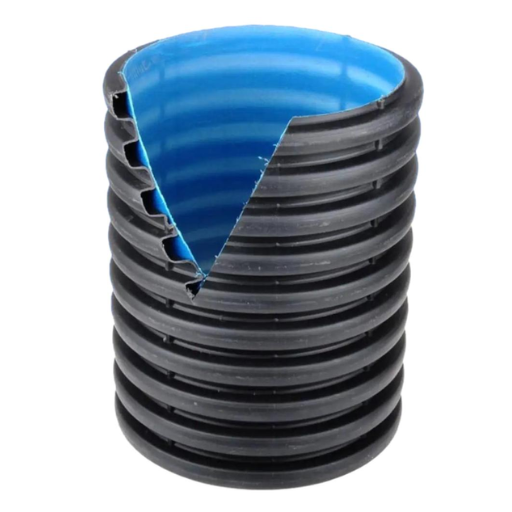
HDPE corrugated pipes have various environmental advantages that enhance sustainability in infrastructure projects. For one, they are made of high-density polyethylene (HDPE), a recyclable substance that reduces waste relative to the alternatives associated with traditional pipe work. Furthermore, their lightweight characteristic enables easy transportation and installation, thus reducing fuel consumption and minimizing greenhouse gas emissions during construction activities. HDPE corrosion resistance and its ability to withstand chemical degradation guarantees longevity where there is less need for frequent replacements or repairs, thus ensuring a reduced environmental effect linked to production and disposal processes. Lastly, the smooth inner surface of HDPE pipes allows for efficient flow, reducing pumping energy consumption and helping conserve water resources. Consequently, these make HDPE corrugated pipes more environmentally friendly when compared to other types used in drainage and sewer systems.
Recyclability and Sustainability
They can be recycled several times due to the excellent recyclability of HDPE corrugation pipes. There have been reports from various sources indicating that HDPE has an infinite lifespan in terms of recycling, which supports the idea of using it for circular economy purposes. By so doing, landfill wastes are minimized while the material is conserved through reuse in different products. Furthermore, producing HDPE consumes less energy than traditional materials, furthering its contribution towards reduced carbon footprints. As an eco-friendly option, these products encourage preservation efforts and provide cheap solutions for diverse infrastructural demands.
Resistance to Corrosion and Abrasion
Because of their durability and dependability, high-density polyethylene (HDPE) corrugated pipes resist corrosion and abrasion. Unlike traditional materials such as concrete or metals, HDPE has a natural resistance to various chemicals and environmental conditions, enabling its use in multiple applications in harsh environments. For instance, HDPE does not rust or corrode. It remains intact over time. Additionally, the smooth surface reduces friction, thus minimizing particulate wear on the surface and increasing the life of piping systems. This implies that these pipe materials are long-lasting with minimal maintenance costs, making them ideal for drainage and sewer applications.
Impact on Soil and Water Quality
HDPE pipes contribute positively to soil and water quality through their non-reactive nature, which prohibits leaching harmful substances into the environment. In contrast to metal pipes, which can corrode, thereby releasing toxins, HDPE does not move, minimizing contamination risks in soils and groundwater. Moreover, sediment build-up is mitigated by the slick internal walls, ensuring no jamming by sediments, hence promoting proper water flow and drainage. Based on different studies conducted, especially on agricultural lands, show that using HDPE can lead to better agricultural outcomes since it maintains water quality for irrigation purposes, which is significant for both crop growth and soil fertility. Along these lines, using HDPE pipes espouses eco-friendly activities that preserve the earth’s natural resources balance.
Where to Buy and What to Look For?
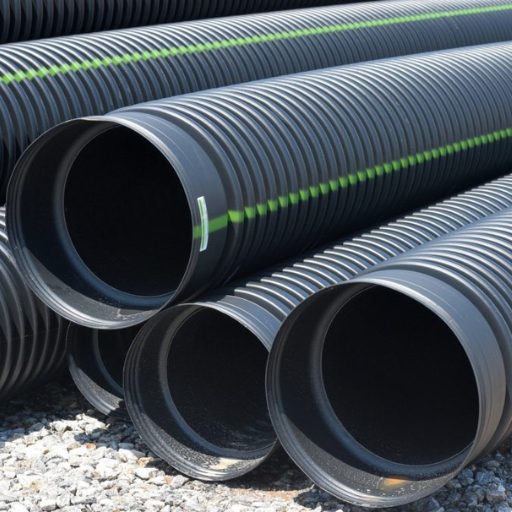
For reliable HDPE pipes, one must consult recognized suppliers and manufacturers. Search for firms that produce plastic piping systems or are well-established in distributing HDPE materials. Other factors include checking the quality certifications and compliance with standards such as ASTM and ISO to buy durable and dependable products. Also, consider your project’s required length and diameter specifications and ask about available fittings and accessories that match your system. It is also possible to go through customers’ comments to know about a supplier’s dependability and a product’s performance. Finally, compare prices from multiple sources to get a good deal without compromising quality.
Trusted Suppliers and Brands
- Sustainable Drainage Systems (SDS)
SDS gives various options for HDPE piping, mainly in sustainable drainage system applications. The company provides comprehensive information about the certification of its products and their uses, thus ensuring farmers make informed decisions regarding their crop production practices. Being assured of what they sell, SDS maintains its credibility by assuring clients of quality.
- Dura-Line
Known for innovative design and durability, Dura-Line is a leading supplier of HDPE pipe solutions globally. Their wide range includes all sizes and fittings suitable for different applications, such as agriculture, construction, utilities, etc. Furthermore, they follow environmentally friendly policies using green manufacturing techniques and high-quality components.
- ADS (Advanced Drainage Systems)
ADS is a well-known name in drainage solutions. It supplies HDPE pipes according to rigorous standards. Their website includes many helpful resources, including comprehensive product specifications, for choosing the appropriate conduit system. ADS considers sustainability one of its core values, making it a favorable vendor for eco-friendly projects.
Price Considerations and Budgeting
While budgeting for HDPE piping solutions, it is essential to get price information from several reputable suppliers. This will help you get the most out of your expenditure. Prices may vary greatly depending on HDPE type, size, and location.
- Sustainable Drainage Systems (SDS) offers competitive prices for environmentally friendly options. Their specifications are detailed enough for customers to make informed decisions. The typical price range of their products falls within £2-£8 per meter, depending on what is required.
- Dura-Line lists HDPE pipes and fittings starting at around $0.50 per foot for plain vanilla ones and increasing complexity and additional features such as innovative designs.
- Advanced Drainage Systems (ADS) offers a pricing model that often starts at about $1.00 per foot but can increase based on specific product configurations and certifications required for some projects.
When comparing these suppliers’ costs with their quality standards and sustainability practices, effective drainage project budgets are needed.
Access to Fittings and Accessories
Leverage to ensure compatibility and performance when sourcing fittings and accessories for HDPE piping systems.
- All SDS compatible fittings designed for their HDPE products include connectors, tees, elbows, etc., which are found in an online catalog. This enables easy matching of fittings with standard sizes if necessary so as to have a seamless fit.
- Dura-Line also provides a wide range of accessories that complement its HDPE piping solutions. These encompass everything from couplings to mechanical fittings tailored to diverse installation scenarios, and specifications can be viewed online.
- Advanced Drainage Systems (ADS) also stocks various fitting types, such as direct connectors or transition fittings. Installation best practices and product availability are provided, thereby assisting customers in finding suitable components for specific projects.
By comparing the selections and availability from these top-rated suppliers, professionals can effectively source the fittings and accessories necessary for successful HDPE piping installations.
Reference sources
-
Advanced Drainage Systems, Inc. (ADS): This source offers detailed insights into the benefits, applications, and technical specifications of HDPE double-wall corrugated pipes, emphasizing their durability, strength, and flexibility. Read more
-
Contech Engineered Solutions: This source provides an overview of HDPE double-wall corrugated pipes, including their use in stormwater management, sanitary sewers, and drainage systems, highlighting their cost-effectiveness and long-term performance. Read more
-
Plastic Pipe Institute (PPI): This source discusses the applications, advantages, and environmental benefits of using HDPE double-wall corrugated pipes, focusing on their resistance to corrosion, chemicals, and abrasion. Read more
Related Articles:Essential Attributes of HDPE Double Wall Corrugated Pipe





